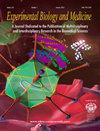药物发现安全中的数据科学:挑战与机遇
IF 2.8
4区 医学
Q2 MEDICINE, RESEARCH & EXPERIMENTAL
引用次数: 0
摘要
早期降低药物靶点和化学的风险对于为药物项目提供最佳的成功机会至关重要。靶标安全性评估(tsa)使用靶标生物学、基因和蛋白质表达数据、人类和动物的遗传信息以及竞争对手的复合智能来了解与调节药物靶标相关的潜在安全风险。然而,每个运输安全管理局都必须考虑每天更新的大量信息。我们开发了一种基于数据科学的方法,可以获得最佳TSA的相关证据。这是建立在专家主导的传统和人工智能为基础的文献和其他生物信息学数据库的挖掘。根据证据框架识别潜在安全风险,并根据目标的新颖性进行调整。专家知识是解释证据和考虑药物安全性、方式和每个项目中每个TSA的预期患者群体的细微差别所必需的。总的来说,tsa充分利用了数据科学的最新发展,可以在药物项目中使用,以识别和降低风险,帮助做出明智的决策和资源管理。这些方法应用于药物项目的早期阶段,以指导诸如靶点选择、发现化学选择、体外测定选择和体内研究性研究的终点等决策。本文章由计算机程序翻译,如有差异,请以英文原文为准。
Data science in drug discovery safety: Challenges and opportunities
Early de-risking of drug targets and chemistry is essential to provide drug projects with the best chance of success. Target safety assessments (TSAs) use target biology, gene and protein expression data, genetic information from humans and animals, and competitor compound intelligence to understand the potential safety risks associated with modulating a drug target. However, there is a vast amount of information, updated daily that must be considered for each TSA. We have developed a data science–based approach that allows acquisition of relevant evidence for an optimal TSA. This is built on expert-led conventional and artificial intelligence–based mining of literature and other bioinformatics databases. Potential safety risks are identified according to an evidence framework, adjusted to the degree of target novelty. Expert knowledge is necessary to interpret the evidence and to take account of the nuances of drug safety, the modality, and the intended patient population for each TSA within each project. Overall, TSAs take full advantage of the most recent developments in data science and can be used within drug projects to identify and mitigate risks, helping with informed decision-making and resource management. These approaches should be used in the earliest stages of a drug project to guide decisions such as target selection, discovery chemistry options, in vitro assay choice, and end points for investigative in vivo studies.
求助全文
通过发布文献求助,成功后即可免费获取论文全文。
去求助
来源期刊

Experimental Biology and Medicine
医学-医学:研究与实验
CiteScore
6.00
自引率
0.00%
发文量
157
审稿时长
1 months
期刊介绍:
Experimental Biology and Medicine (EBM) is a global, peer-reviewed journal dedicated to the publication of multidisciplinary and interdisciplinary research in the biomedical sciences. EBM provides both research and review articles as well as meeting symposia and brief communications. Articles in EBM represent cutting edge research at the overlapping junctions of the biological, physical and engineering sciences that impact upon the health and welfare of the world''s population.
Topics covered in EBM include: Anatomy/Pathology; Biochemistry and Molecular Biology; Bioimaging; Biomedical Engineering; Bionanoscience; Cell and Developmental Biology; Endocrinology and Nutrition; Environmental Health/Biomarkers/Precision Medicine; Genomics, Proteomics, and Bioinformatics; Immunology/Microbiology/Virology; Mechanisms of Aging; Neuroscience; Pharmacology and Toxicology; Physiology; Stem Cell Biology; Structural Biology; Systems Biology and Microphysiological Systems; and Translational Research.
 求助内容:
求助内容: 应助结果提醒方式:
应助结果提醒方式:


